Ranitidine dosages: 300 mg, 150 mg
Ranitidine packs: 60 pills, 90 pills, 120 pills, 180 pills, 270 pills, 360 pills
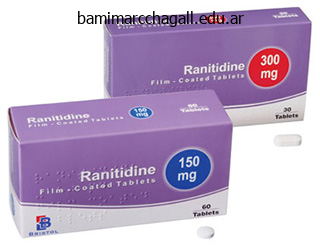
Best ranitidine 300mg
The similar strategies for pores and skin antisepsis for adults apply to pediatric patients until the antiseptic is tincture of iodine. It is really helpful that rather than the iodine step, the site must be cleansed two further times with separate preparation pads saturated with 70% isopropyl alcohol or ethyl alcohol. Pediatric blood tradition bottles are designed to accommodate an inoculation of up to four mL of blood. Draws from vascular strains are known to have a excessive contamination rate and may trigger an individual to receive antibiotic remedy when not needed. Despite their frequent incidence, catheter-related infections are tough to diagnose. Coagulation Specimens Most coagulation checks are collected in mild blue-top sodium citrate tubes. It was as quickly as customary to draw a "clear" or discard tube before drawing a lightweight blue-top tube if it was the first or solely tube to be collected. A few milliliters of blood have been drawn right into a plain red-top tube to clear the needle of thromboplastin contamination picked up as it penetrated the skin. The following are a selection of important issues to bear in mind when collecting specimens for coagulation exams. In such cases, laboratory personnel may request specimen assortment in a special tube that has had the anticoagulant volume adjusted. Otherwise, the air within the tubing will take the place of blood in the tube and lead to an incomplete draw and an incorrect blood-to-additive ratio. Glucose ranges in blood specimens obtained two hours after a meal are rarely elevated in regular persons but may be significantly elevated in diabetic sufferers. Glucose levels in specimens collected too early or late may be falsely elevated or decreased, respectively, resulting in misinterpretation of results. If test results are irregular, different tests that could be ordered are HbA1c or a glucose tolerance. Box 11-3 Principles of 2-Hour Postprandial Specimen Collection � the patient fasts previous to the take a look at. This means no consuming, smoking, or drinking aside from water for a minimal of 10 to 12 hours before the take a look at. The two main kinds of issues involving glucose metabolism are those during which the blood glucose degree is elevated (hyperglycemia), as in diabetes mellitus, and people during which the blood glucose levels are decreased (hypoglycemia). Insulin, produced by the pancreas, is primarily liable for regulating blood glucose ranges. That is, if the primary specimen is collected by venipuncture, all succeeding specimens should be venipuncture specimens. If capillary puncture is used to acquire the first specimen, all succeeding specimens also wants to be pores and skin puncture specimens. Rationale the patient should be properly recognized and should understand and consent to the process. Eating, consuming drinks other than water, smoking, and chewing gum all have an effect on take a look at outcomes. Ask the patient to collect a fasting urine specimen if urine testing has been requested. Children and small adults are given approximately 1 g of glucose per kilogram of weight. Remind the affected person to end the beverage Results could also be inaccurate if the patient takes within five minutes. Patients (especially outpatients) should pay attention to the gathering times in order that they can be out there for the draw. Deliver or ship specimens to the lab as Glucose specimens collected in gel barrier quickly as attainable. Specimens collected in sodium fluoride are stable for twenty-four hours and are sometimes held and tested all collectively. Note the time the affected person finishes the beverage, start timing for the test, and calculate the collection occasions for the the rest of the specimens based mostly on this time. If vomiting occurs after that, the healthcare supplier should be consulted to determine if the take a look at ought to be continued. In normal patients, blood glucose levels peak within half-hour to one hour following glucose ingestion.
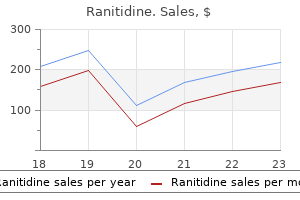
Cheapest ranitidine
Laboratories are additionally exempted from the ban on the usage of a trailing zero (a zero to the right of a decimal point) because in reporting laboratory test outcomes, the precision of a numeric value is usually indicated by the digits after the decimal level, even when the trailing digit is a zero. Which one of the following organizations writes tips for laboratory practices Misinterpreted Instructions A phlebotomy scholar is doing a medical rotation with a laboratory in a medical clinic. The phlebotomist in cost thinks that it will be a great studying expertise for the student to administer the check. The phlebotomist tells her not to worry, writes out the instructions shown beneath, and goes about processing specimens which are ready to be centrifuged. She got scared and called the phlebotomist, who observed that half the 1 mL syringe contained antigen. She instructed the coed to pull the needle out immediately, telling her that she had used an excessive amount of antigen. Demonstrate basic knowledge of the terminology, capabilities, and organization of the body. Describe capabilities, establish elements or main constructions, and accurately use terminology associated with each body system. Overview the human body consists of over 30 trillion cells, 206 bones, seven hundred muscular tissues, approximately 5 L of blood, and about 25 miles of blood vessels. A elementary knowledge of human anatomy and physiology (A&P) is an asset to anybody working in a healthcare setting and particularly helps the phlebotomist understand the nature of the varied issues of the body, the rationale for the laboratory tests associated with them, and the importance of the position that laboratory tests play in monitoring physique system features and diagnosing disorders. This article covers general physique organization and function, anatomic terminology, and the features, constructions, problems, and diagnostic exams related to nine body techniques. Because of its special significance to phlebotomy, a 10th system (circulatory) is covered separately in Chapter 6. Misconception Alert: Some students are confused in regards to the difference between anatomy and physiology in accordance with how they answered the next question within the Jones & Bartlett Learning TestPrep: Human anatomy offers with 26% of the students who answered this query chose "Functioning of all body techniques. Key Point: the medical science and specialty practice involved with all elements of disease-including the traits, causes, and results of disease on the construction and function of the body-is known as pathology, and the medical skilled educated on this area is known as a pathologist. Body Positions There are different physical positions of the physique utilized in healthcare for describing the body or positioning the body for sure procedures. For consistency in describing the course or the placement of a given level of the physique, medical personnel normally refer to the body as if the patient is within the anatomic position, no matter precise body place. A particular person in the anatomic place is standing erect, with ft parallel, arms at the sides, and eyes and palms dealing with ahead. Other Positions A widespread body place a phlebotomist might encounter when drawing blood, particularly from an inpatient, is supine place, in which the affected person is mendacity horizontal on the again with the face up. The reverse place of supine is susceptible, in which the affected person is mendacity face down. However, the time period "inclined" can also be used to describe the hand with the palm facing down, a position used for drawing blood specimens from the hand veins. Memory Jogger: A way to equate supine with lying down is to consider the ine as in recline. Directional terms describe the connection of an area or part of the physique with respect to the the rest of the physique or physique components. Key Point: Directional terms are relative positions with respect to different parts of the physique. For instance, the ankle may be described as distal to the leg and proximal to the foot. Body cavities are divided into two groups, dorsal and ventral, according to their location throughout the body. Key Point: the thoracic cavity is separated from the abdominal cavity by a muscle referred to as the diaphragm. Body Functions There are many complicated processes at work in the human body to hold it alive and in good well being. These processes include mechanical, bodily, and biochemical features which might be carried out concurrently on a continuing foundation. Homeostasis the human body continuously strives to keep its inner surroundings in a state of equilibrium or stability. An instance is the conversion of carbohydrates in meals into the glucose wanted by the cells and the next glycolysis or breakdown of glucose by the cells to produce energy.
Syndromes
- To prevent or reverse fat loss
- Abnormal bleeding due to changes in hormone levels (anovulatory bleeding)
- If the medication was prescribed for the patient
- Swelling in the throat (can be severe and completely close the throat)
- The pulse generator is about the size of a large pocket watch. It contains a battery and the electrical circuits that read the electrical activity of your heart.
- Cancer
- Guide a surgeon to the right area during a biopsy or other procedures
Order ranitidine discount
Place the swab Keeps the microbes alive until they are often cultured within the laboratory. Remove gloves Proper glove removing and hand decontamination prevents the and sanitize unfold of an infection. Arrange Timely processing is important to forestall overgrowth of normal transport or flora. Rapid Strep Testing Numerous kits are available for the direct detection of group A strep on throat swab specimens. The first step involves extraction of the contents from the throat swab, and the second step entails a rapid chromatographic immunoassay for the qualitative detection of strep A antigen. Tissue Specimens Tissue specimens from biopsies may be despatched to the laboratory for processing. It is essential for the phlebotomist to examine the process guide to determine the correct handling for any unfamiliar specimen. Additional info usually required on a nonblood specimen label includes the a. Collect the first-morning specimen, start the timing, and acquire all urine for the next 24 hours besides the primary specimen voided the next morning. Collect the first-morning specimen, start the timing, and gather all urine for the following 24 hours together with the first specimen voided the following morning. Discard the first-morning specimen, start the timing, and acquire all urine for the following 24 hours besides the first specimen voided the next morning. Discard the first-morning specimen, begin the timing, and gather all urine for the following 24 hours including the primary specimen voided the following morning. Which kind of sample is often used to determine arsenic poisoning in agricultural employees The specimen container is properly labeled and seems to maintain a traditional quantity of urine. Should the specimen have been accepted if the patient had included the specimen that was several hours late After the patient has been dismissed and gone from the lab, the phlebotomist reads the notice connected to the request. Immediately after that, the patient shows up on the door, bleeding down his arm and throughout his clothes. How should the phlebotomist deal with the state of affairs now that the affected person has returned with an issue Clinical and Laboratory Standards Institute, H56; Body Fluid Analysis for Cellular Composition. Demonstrate knowledge of practices, terminology, hazards, and issues associated to arterial blood collection, and identify and analyze arterial puncture websites based on site-selection criteria and the benefits and downsides of every web site. Perform the modified Allen check; explain how to interpret results, and describe what to do based mostly upon the results. Overview Arterial blood composition is more consistent throughout the body than that of venous blood, which varies relative to the metabolic needs of the world it serves. However, arterial puncture is technically troublesome and probably extra painful and hazardous than venipuncture. To ensure accurate test outcomes and the security of the affected person, those who gather arterial specimens will need to have thorough knowledge of all features of assortment and particular training in arterial puncture procedures. This article focuses on personnel who may be required to perform arterial puncture, arterial puncture sites, and site selection standards, together with advantages and downsides of utilizing each website. Phlebotomists who acquire arterial specimens should have in depth coaching involving principle, demonstration of method, remark of the actual process, and efficiency of arterial puncture with supervision earlier than performing arterial punctures on their own. For quality assurance functions, individuals performing arterial puncture should endure periodic analysis. Site-Selection Criteria Several totally different sites can be utilized for arterial puncture. The standards for web site choice embrace the following: � Presence of collateral circulation, which means that the site is equipped with blood from multiple artery so that circulation may be maintained if one vessel is obstructed or broken. SonoSite M-Turbo point-of-care ultrasound system displaying a brachial artery imaged with a high-frequency linear transducer. The chosen artery ought to be in an space that poses little risk of injuring adjacent buildings or tissue during puncture, helps repair or safe the artery to maintain it from rolling, and permits adequate stress to be utilized to the artery after specimen assortment. Arterial Puncture Sites the three primary sites where arteries are accessed for specimen assortment in order of choice are the wrist, the antecubital area of the arm, and the groin.
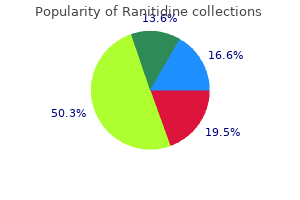
Purchase generic ranitidine canada
Removal of huge quantities of blood at once or even small portions regularly, as is commonly the case when an toddler or youngster is in intensive care, can lead to anemia. Consequently, most amenities have limits on the quantity of blood that might be eliminated per draw and for varied time intervals from 24 hours as a lot as a month. Consequently, for secure apply, a competent phlebotomist should be capable of calculate blood quantity. Iatrogenic Anemias in Infants and Children Frequent blood draws from infants and kids may be warranted to set up a diagnosis or to monitor remedy responses. In such situations, single blood draws from the toddler or baby may be nicely within established blood draw volumes for pediatric sufferers (see Table 8-2), however the cumulative blood losses from repetitive attracts might result in an iatrogenic anemia. Often diagnosed as a hypochromic, normocytic anemia, iatrogenic anemias could be fairly insidious (subtle) and perplexing to the healthcare team. Only when the astute doctor, nurse, phlebotomist, or different healthcare employee recognizes that small however incremental blood volumes are repetitively taken from the child, can the diagnosis be thought-about. Dealing With Parents or Guardians Parents or guardians may give one of the best prediction of how cooperative the kid shall be. A phlebotomist who behaves in a heat and friendly manner and shows a relaxed, confident, and caring perspective will extra simply earn that trust and limit his or her own anxiety as nicely. Dealing With the Child Venipuncture in children that ends in a traumatic expertise can have lasting negative consequences, including elevated sensitivity to pain, a decreased capacity to deal with it, and a lifelong worry of needles. Approach them slowly and decide their degree of anxiety or worry before handling tools or touching their arms to search for a vein. Studies have demonstrated that age-appropriate distractions similar to videos, motion pictures, video games, counting, and singing can decrease the stress and anxiety of doubtless painful procedures corresponding to venipuncture. Key Point: Calm a crying child as soon as possible, as a end result of the stress of crying and struggling can alter blood parts and result in misguided take a look at results. With professional credentialing from the Association of Child Life Specialists, an authorized child life specialist helps kids and their households address illnesses and the challenges posed by hospitalizations and procedures, together with blood attracts. In ideal circumstances, trusting relationships with children can be created and maintained by a baby life specialist, who can facilitate blood attracts to be less traumatic. While not all centers employ the providers of a kid life specialist, their services must be considered each time appropriate. Pain Interventions Interventions to decrease ache transmission or ease the ache of venipuncture embody using chilly or vibration, topical anesthetics for newborns by way of adults, and oral sucrose and pacifiers for infants and toddlers. It is available in a cream that must be coated with a clear dressing or a patch after application. It takes roughly one hour (a major disadvantage to its use) for it to anesthetize the world to a depth of approximately 5 mm. Key Point: In a busy clinical setting, patients can typically wait for extended periods of time earlier than having a venipuncture. Oral Sucrose Use of a 12% to 24% resolution of oral sucrose has been proven to reduce the pain of procedures corresponding to heel puncture and venipuncture in infants as a lot as six months of age. The sucrose must be given to the infant two minutes before the process, and its pain-relieving benefits final for about five minutes. Studies have proven that infants given sucrose or maybe a common pacifier by itself cry for a shorter time and are more alert and fewer fussy after the process. Selecting a Method of Restraint Immobilization of the affected person is a crucial side in obtaining an enough specimen from infants and children while ensuring their security. A newborn or young toddler may be wrapped in a blanket, but bodily restraint is usually required for older infants, toddlers, and youthful children. The different arm supports the venipuncture arm from behind, at the bend of the elbow. Description If the kid is mendacity down, the parent or one other phlebotomist usually leans over the child from the alternative facet of the bed. The tubing of the butterfly allows flexibility if the child struggles or twists during the draw. Use of an evacuated-tube holder and butterfly needle is preferred as a outcome of it minimizes chances of producing clotted specimens and inadequately crammed tubes. However, the smallest tubes obtainable ought to be used to cut back the chance of creating too much vacuum draw on the vein and causing it to collapse. Caution: Laboratory personnel will assume that blood in microtubes is capillary blood.
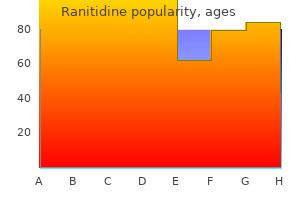
Order genuine ranitidine
Even after correction, blood should leak out of the opening brought on by the needle, especially if the tourniquet is left on all through the draw. Bevel Against a Vein Wall Blood flow could be impaired if the needle bevel is up against the higher or decrease wall of the vein. Remove the tube from the needle within the holder to release vacuum pull on the vein and pull the needle back slightly. If blood flow is established, the issue most likely was a difficulty with the bevel and the vein wall. Do not rotate the bevel of the needle without first eradicating the tube and pulling the needle again slightly or the vein may be injured. In reality, the needle bevel might be in the midst of the lumen where it must be and nonetheless come in contact with valve tissue. The needle bevel could presumably be caught in the valve, or the valve flaps might be drawn up towards the needle bevel by tube vacuum. Some phlebotomists say contact with a valve is evidenced by a slight vibration or quiver of the needle caused by the valve trying to open and shut. This state of affairs must be corrected quickly or the valve could be damaged and cause the vein to collapse. Remove the tube from the needle in the holder to launch vacuum pull on the valve tissue and pull the needle back barely. In this case, discontinue the draw and carry out a second venipuncture on a new website, preferably the opposite arm. Do not search or probe for the vein or move the needle in a lateral (sideways) course to find it. Experienced phlebotomists will usually try to save a draw by withdrawing the needle until the bevel is slightly below the skin, and palpating above the needle, being careful not to feel too close to the needle, as this will damage. If the vein is situated, they take away the palpating finger, clean the site, pull the pores and skin taut, and redirect the needle into it. Probing is painful to the affected person and might trigger tears in the vein wall that end in hematoma formation, injury nerves and other tissues, or lead to inadvertent puncture of an artery. This can occur if the vacuum draw of a tube or the stress created by pulling on a syringe plunger is an excessive quantity of for the vein. A vein can even collapse if the tourniquet is tied too tightly or too close to the venipuncture website. In addition, veins sometimes collapse when the tourniquet is eliminated through the draw. This is often the case in aged patients, whose veins are fragile and collapse more easily. It could additionally be that the needle is now not positioned properly and a slight adjustment is needed to reestablish blood move. A clue that a normally visible vein has collapsed is that it disappears as soon because the tube is engaged or when the tourniquet is removed. If the ends of the tourniquet are lying over the arm, grasp them along with your free hand and twist them collectively to reintroduce strain. Key Point: Tube vacuum issues firstly of a draw may be a sign that the tube is cracked or has been dropped. Cracked tubes present a safety hazard as a result of they might leak or break with additional handling. You remove the tube, pull back the needle slightly, rotate the bevel, and reset the tube. If the model new tube fails to fill with blood, then you want to discontinue the draw and try once more at one other web site with another new tube. When the arm of the patient is swollen with excess fluids, the condition is called a. Which situation can be most likely to permit reflux to happen during venipuncture A affected person complains of maximum pain if you insert the needle throughout a venipuncture try.
Purchase ranitidine 300 mg with visa
The most typical instance is bilirubin, which can decrease by up to 50% after one hour of light publicity. An straightforward approach to shield the blood in a group tube from mild is to wrap it in aluminum foil. Amber tubes, biohazard baggage, or light-blocking transport containers can be used. Exposure to mild can be particularly damaging to infant bilirubin specimens collected by capillary puncture as a result of the blood is instantly exposed to gentle throughout collection, and light-weight can easily penetrate the small quantities of blood collected as nicely. Consequently, light-blocking, amber-colored microcollection containers are available for amassing these specimens. Light-blocking opaque secondary specimen transport containers are available for specimen aliquots as properly. Specimen wrapped in aluminum foil to defend it from gentle and an amber aliquot or transport tube. Specimen Processing Most off-site drawing stations have processing areas where specimens are centrifuged and separated from the cells to shield analyte stability before being despatched to the testing website. Large laboratories typically have a specific area, which may be called central processing/specimen processing, lab control, or triage (screening and prioritizing area), the place specimens are acquired and ready for testing. Here the specimens are identified, logged/accessioned, sorted by division and type of processing required, and evaluated for suitability for testing. Required specimen conditions corresponding to chilling, safety from light, and maintaining the specimen warm should continue to be maintained throughout processing and till the specimen is examined. Protective face gear, similar to masks and goggles with aspect shields, or chin-length face shields, or performing actions behind a bench-top splash protect are required when manually opening or handling open specimen tubes or containers, pipetting specimens into switch tubes, and some other exercise that has the potential for producing aerosols, splashes, sprays, or droplets of blood or different physique fluids. Specimen Suitability Suitable specimens are required for accurate laboratory outcomes. For instance, it must be decided that each specimen delivered to the lab for testing is correctly identified, collected in the appropriate tube or container at the requested time, following any required particular collection conditions, stuffed to a suitable degree, and transported under required conditions in a timely manner. Some rejection standards, similar to hemolysis, may not be recognized until processing has begun and even completed. In the case of hematology specimens, hemolysis will not be observed till after testing is full and the specimen has separated while sitting in a specimen rack. If suitability questions come up, the process guide must be consulted and facility insurance policies followed. Specimens That Require Centrifugation Specimens for checks performed on serum or plasma should be centrifuged. The processing of these specimens has three phases: precentrifugation (after specimen collection and before centrifugation); centrifugation (when the specimen is in the centrifuge); and postcentrifugation (after centrifugation and before removal of serum or plasma). Specimens for plasma exams are collected in anticoagulant tubes that stop the blood from clotting, however they must nonetheless be centrifuged to separate the plasma from the cells. However, since no waiting for the specimens to clot is concerned, tubes for plasma tests, including people who include gel. Key Point: Tubes must continue to be kept in an upright position with stoppers on all through the three centrifugation phases. For example, pH increases and ionized calcium and acid phosphatase levels lower. In addition, leaving tubes open exposes specimens to evaporation and contamination. Misconception Alert: It is necessary to perceive precentrifugation requirements and to read exam questions fastidiously. For instance, the next query is from the Jones & Bartlett Learning TestPrep: Stoppers should be left on tubes awaiting centrifugation to prevent: Analyte dilution Contamination Decrease in pH All the choices are right 50% of the scholars who answered this question mistakenly chose "all the alternatives are appropriate. Removing stoppers from specimen tubes awaiting centrifugation may cause the specimen to evaporate, leading to analyte concentration, not dilution. Precentrifugation Nonadditive, clot activator, and gel-containing tubes used for serum checks. Residual fibrin can be current as invisible fibrin strands or microfibers that can instantly have an effect on some tests.
Clary (Clary Sage). Ranitidine.
- Dosing considerations for Clary Sage.
- Upset stomach, digestive disorders, kidney diseases, tumors, and other conditions.
- Are there safety concerns?
- What is Clary Sage?
- How does Clary Sage work?
- Are there any interactions with medications?
Source: http://www.rxlist.com/script/main/art.asp?articlekey=96419
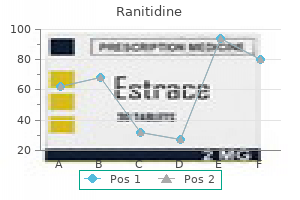
Generic 150mg ranitidine mastercard
Dietary fats intake and risk of uterine leiomyomata: A prospective ultrasound study. Characteristics of the peer-reviewed studies which have examined dietary factors and uterine fibroids although June 2016 are supplied in Table three. Fruits and Vegetables Fruits and greens contain nutritional vitamins, minerals, antioxidants and phytochemicals that may lower fibroid risk. One of essentially the most constant associations between food plan and fibroid danger has been with fruit and vegetable consumption (Table three. Animal data have instructed that lycopene, a carotenoid with strong antioxidant properties, decreases fibroid risk [5]. In distinction, a cross-sectional examine within the National Health and Nutrition Examination Survey examined serum micronutrient ranges and reported higher serum vitamin A concentrations amongst women with fibroids compared to these without, but no serum distinction was observed for different carotenoids or micronutrients [8]. Omega-6 fatty acids have additionally been hypothesized to cut back fibroid threat through their anti-inflammatory properties. However, few studies have examined the associations between dietary fats and fibroid risk [3,7,15]. However, no associations between dietary fat and fibroids were noticed in a cross-sectional research of Japanese ladies enrolled through a well being check-up program [7] or in an Italian case-control study that examined butter, margarine and oil intake [12]. Dairy Foods Dairy meals also include a quantity of components which will shield towards fibroids through their anti-tumorigenic and anti inflammatory results [16,17], in addition to by way of influences on circulating estrogens [18]. In distinction, case-control research in China and Italy reported no significant associations with dairy meals [1], milk or cheese [3]. A case-control examine from China reported no association between fish consumption and fibroid risk [1], while an Italian case-control examine reported a protecting impact of fish consumption on fibroid danger [3]. Dairy Dietary vitamin D Plasma vitamin D Fish Soy Meat Alcohol [1,three,16] [4,16] [25�27] [1,3,15,28] [1,7,16] [1,3] [3,7,30] Soy Soy intake has been examined in populations with high and low intakes of soy products with no clear affiliation. In a casecontrol examine in Japan, no important affiliation was noticed between soy isoflavones and fibroid threat [7]. Meat Only two studies have examined meat consumption in relation to fibroid danger, with inconsistent outcomes. Fish Four research performed in three completely different geographic areas have examined fish consumption. An Italian case-control examine observed no association between alcohol consumption and fibroids; however, wine was the alcohol consumed by 90% of girls included on this study, with solely a small proportion consuming beer [3]. In abstract, few studies have examined the associations between dietary factors and fibroid threat and nearly all of these research have been cross-sectional in design-severely reducing the power to draw temporal trigger and effect conclusions. To date, consistent associations between food plan and fibroid risks are limited to two consistent discoveries: a lowered risk with higher fruit and vegetable consumption (although the first meals contributors remain to be determined) and elevated threat with lower vitamin D ranges (although the impact of sun versus food sources stays unclear). Much more research is required to clarify the role of other dietary components in relation to fibroid danger. Endocrine, paracrine, and autocrine regulation of trophoblastic metalloproteinases. Relationship of plasma polyunsaturated fatty acids to circulating inflammatory markers. Dietary calcium and dairy merchandise modulate oxidative and inflammatory stress in mice and people. Nutritional predictors of insulin-like growth factor I and their relationships to most cancers in males. Dietary correlates of plasma insulin-like growth issue i and insulin-like growth issue binding protein 3 concentrations. Uterine leiomyomata in relation to insulin-like growth factor-I, insulin, and diabetes. Associations between uterine fibroids and life together with food regimen, physical exercise and stress: A case-control research in China. Intake of fruit, vegetables, and carotenoids in relation to danger of uterine leiomyomata. Chiaffarino F, Parazzini F, La Vecchia C, Chatenoud L, Di Cintio E, and Marsico S. Vegetarian food plan and decreased uterine fibroids threat: A case-control research in Nanjing, China.
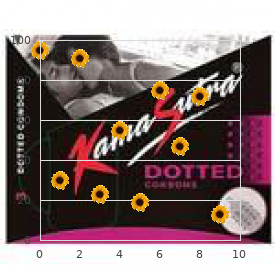
Order cheapest ranitidine and ranitidine
The use of cell salvage is kind of costly, so research has focused on how to establish sufferers preoperatively who will benefit essentially the most from its use. These patients often have a big uterus, multiple fibroids, a low beginning hemoglobin or decline allogenic transfusions. One article wanting retrospectively at 607 stomach myomectomy sufferers discovered that using cell salvage was solely cost-effective 20% of the time. The authors have been in a place to provide statistically significant characteristics that sufferers shared that have been mostly associated with cell-salvage setup. These included vaginal bleeding because the indication for the myomectomy, low preoperative hematocrit, uterine size larger than 15 weeks, gestation on exam and greater than 5 fibroids seen on preoperative imaging [8]. Intraoperative Management using a pericervical tourniquet to compress the uterine arteries is a method that has been successfully used for the explanation that Minimizing Blood Loss Fifties to lower intraoperative blood loss at the time of stomach myomectomy [9]. Many surgeons use a Foley catheter, making small home windows within the anterior and posterior features of the broad ligament at the stage of the interior os to have the ability to facilitate placement. The catheter is then clamped tightly in place and is eliminated on the finish of the case. Triple tourniquets further obstruct blood circulate to the uterus by compressing the ovarian arteries along with the uterine arteries. A small, randomized managed trial with 28 individuals in contrast triple tourniquet use to sufferers without tourniquets. In this research, a number 1 polyglactin suture was threaded by way of the home windows created within the broad ligament and a Roeder slip knot was tied. Then plastic tubing was positioned across the infundibulopelvic ligament lateral to the fallopian tube and ovary. Vasopressin is regularly injected intraoperatively to find a way to cause vasoconstriction of vessels and myometrial contraction. A dilute formulation of 20 items of vasopressin diluted with 30�100 mL of normal saline is injected just below the serosa along the aircraft of the deliberate uterine incision [11]. Studies from the Nineties compared serosal injection of vasopressin with placebo and proved that there was a lower in intraoperative blood loss. More recent studies have looked at combining the utilization of perivascular vasopressin with other proven methods to see if blood loss may be further reduced. One such examine in contrast using perivascular vasopressin in opposition to the combination of a single dose of preoperative rectal misoprostol and intraoperative perivascular vasopressin. A statistically important distinction in intraoperative blood loss was discovered when the rectal misoprostol was used together with the vasopressin [12]. It follows that vasopressin likely reduces intraoperative blood loss when paired with other previously mentioned strategies like tourniquet or uterine artery embolization. Tranexamic acid has been studied as a means of decreasing blood loss through inhibition of fibrinolysis. One review concluded that perioperative intravenous use of tranexamic acid did lower intraoperative blood loss. Physicians may be wary of using this medicine as it may increase the chance of embolism, owing to its anti-fibrinolytic properties. None of the participants in the reviewed studies, nonetheless, skilled these severe side effects [13]. Although it has been obtainable for use in gynecologic surgeries for years, there is solely one potential randomized trial investigating its utility in open myomectomies. Cervical and decrease uterine segment fibroids are challenging to remove because of their location near the uterine arteries. The location of the fibroid can impression which software the surgeon chooses to use to cut back blood loss. Frequently, cervical fibroids distort the traditional anatomy, making a tourniquet troublesome to place safely. In this case, preoperative medicines in addition to vasopressin may be the wisest path to minimize blood loss. There is little information about whether or not or not one incision versus several uterine incisions increases blood loss.
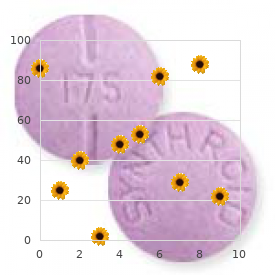
Order ranitidine visa
The filter paper is brought near the heel, and a big drop of free-flowing blood is applied to the center of the primary circle on the printed side of the paper. The flowing blood should be kept in touch with the paper, but the paper should not be allowed to touch the surface of the heel. This can lead to smearing, blotting, and stoppage of blood move and incomplete penetration of blood by way of the paper. The unique place of the paper should be maintained, and blood must continue flowing till it fully fills the circle on both sides of the paper. Unfilled or incompletely filled circles can result in incapability to perform all required exams. Circles should be stuffed from one facet of the paper only and by one giant drop that spreads throughout the circle. Application of multiple drops or filling circles from either side of the paper causes layering of blood and potential misinterpretation of outcomes. Caution: Do not contaminate the filter paper circles by touching them with or with out gloves or permitting another object or substance to touch them before, during, or after specimen collection. Substances which were identified as contaminants in new child screening specimens include alcohol, method, lotion, powder, and urine. After assortment, the specimen must be allowed to air-dry in an elevated, horizontal position away from heat or sunlight. Hanging could cause the blood to migrate and focus towards the low finish of the filter paper and lead to faulty test results on the pattern. Stacking can lead to crosscontamination between specimens, which additionally causes erroneous results. When dry, the requisition containing the sample is often positioned in a particular envelope and sent to a state public health laboratory or different accredited laboratory for testing. The procedure for collecting blood spots for new child screening is shown in Procedure 10-4. Follow Chapter 8 venipuncture steps See Chapter eight Procedure 8-2: steps 1 1 via 5. The paper must not actually touch the heel; if it does, smearing, incomplete penetration of the paper, blotting, and stoppage of blood circulate may finish up. Small drops may end up in incomplete filling and the tendency to layer successive drops in a circle to fill it. The drop should touch the center of the circle for blood to uniformly unfold out to the perimeter. Blood drop place have to be maintained till blood soaks via the circle, utterly filling both sides of the paper. Caution: Do not fill spots from the reverse facet to end filling the circles as a result of this causes layering and erroneous results. Immediate labeling with appropriate data helps ensures specimens are properly identified. Examining the positioning is critical to confirm Note: Do not apply a bandage to the that bleeding has stopped. Do not apply a bandage as a result of it could come free and turn out to be a choking hazard or tear the pores and skin when removed. Remove gloves aseptically and wash hands or use a hand sanitizer as an infection control precaution. Air-drying in an elevated horizontal position away from heat or sunlight is required for new child screening specimens. They should not be hung to dry or stacked with other specimens earlier than, during, or after the drying course of. Hanging or storage at a slant causes blood to migrate to the low finish of the filter paper and leads to erroneous check results. Thank the affected person, take away gloves, sanitize the arms, and transport specimen to the lab.
Purchase ranitidine 300 mg on-line
The Role of the Liver in Hemostasis the liver plays an necessary role within the hemostatic course of. It additionally produces the bile salts needed for the absorption of vitamin K, which is essential to the synthesis of a number of the coagulation factors. In addition, mast cells (tissue basophils) within the liver produce heparin, a naturally occurring anticoagulant. When the liver is diseased, the synthesis of coagulation elements is impaired, and bleeding may end result. Coumarins (including Coumadin and other warfarin commerce names) are used to treat clotting issues by inhibiting the right synthesis of the vitamin K�dependent components. Hemostatic Disorders and Diagnostic Tests Examples of disorders and diagnostic checks related to the hemostatic process are listed in Box 6-6. The Lymphatic System the lymphatic system is a community of organs, vessels, ducts, and nodes. Water, oxygen, and nutrients continually diffuse through the capillary partitions into the tissue areas. Much of the fluid diffuses again into the capillaries together with waste merchandise of metabolism. Lymphatic capillaries be a part of with larger and larger lymphatic vessels until they empty into certainly one of two terminal vessels, either the right lymphatic duct or the thoracic duct. Lymph moves through the vessels primarily owing to skeletal muscle contraction, a lot as blood moves through the veins. Like veins, lymphatic vessels have valves to maintain the lymph flowing in the right direction. Before reaching the ducts, the lymph passes by way of a series of lymph nodes which trap and destroy micro organism and overseas matter and produce lymphocytes. The tonsils, thymus, gastrointestinal tract, and spleen also comprise lymphoid tissue. Caution: Axillary lymph nodes (nodes within the armpit) are sometimes eliminated as a part of breast cancer surgery. Their elimination can impair lymph drainage and intervene with the destruction of bacteria and international matter within the affected arm. Key Point: Inflamed lymph nodes might not have the power to filter pathogens from the lymph earlier than it returns to the bloodstream. Lymphatic System Disorders and Diagnostic Tests Examples of problems and diagnostic checks associated with the lymphatic system are listed in Box 6-7. The chamber of the guts that receives blood from the systemic circulation is the a. When taking a blood stress, the systolic strain is the stress reading when the: a. Which of the following blood vessels are listed in the correct order of blood circulate Which formed element is the first to play a job in sealing an harm to a blood vessel She immediately spins it within the centrifuge, inflicting the cells to go to the bottom of the tube and leaving clear liquid at the high. The Sample, Ceramides Levels Significantly and Independently Linked to Coronary Artery Disease Risk, May. List, describe, and explain the purpose of the tools and provides needed to gather blood specimens by venipuncture, and define related terms and abbreviations. Demonstrate data of the kinds of blood assortment components, identify the chemical composition of the precise components within every kind, and describe how every additive works. Overview the primary duty of the phlebotomist is to acquire blood specimens for laboratory testing. Blood is collected by a number of methods, together with arterial puncture, capillary puncture, and venipuncture. This article describes general blood collection gear and supplies generally wanted regardless of the method of collection, tools specific to venipuncture, components utilized in blood assortment, and the order of draw for collecting or filling blood specimen tubes. Choosing the suitable tools and using them correctly helps guarantee the protected collection of high-quality blood specimens. Some tools can be utilized with any technique of blood collection and some is particular to the strategy used.


